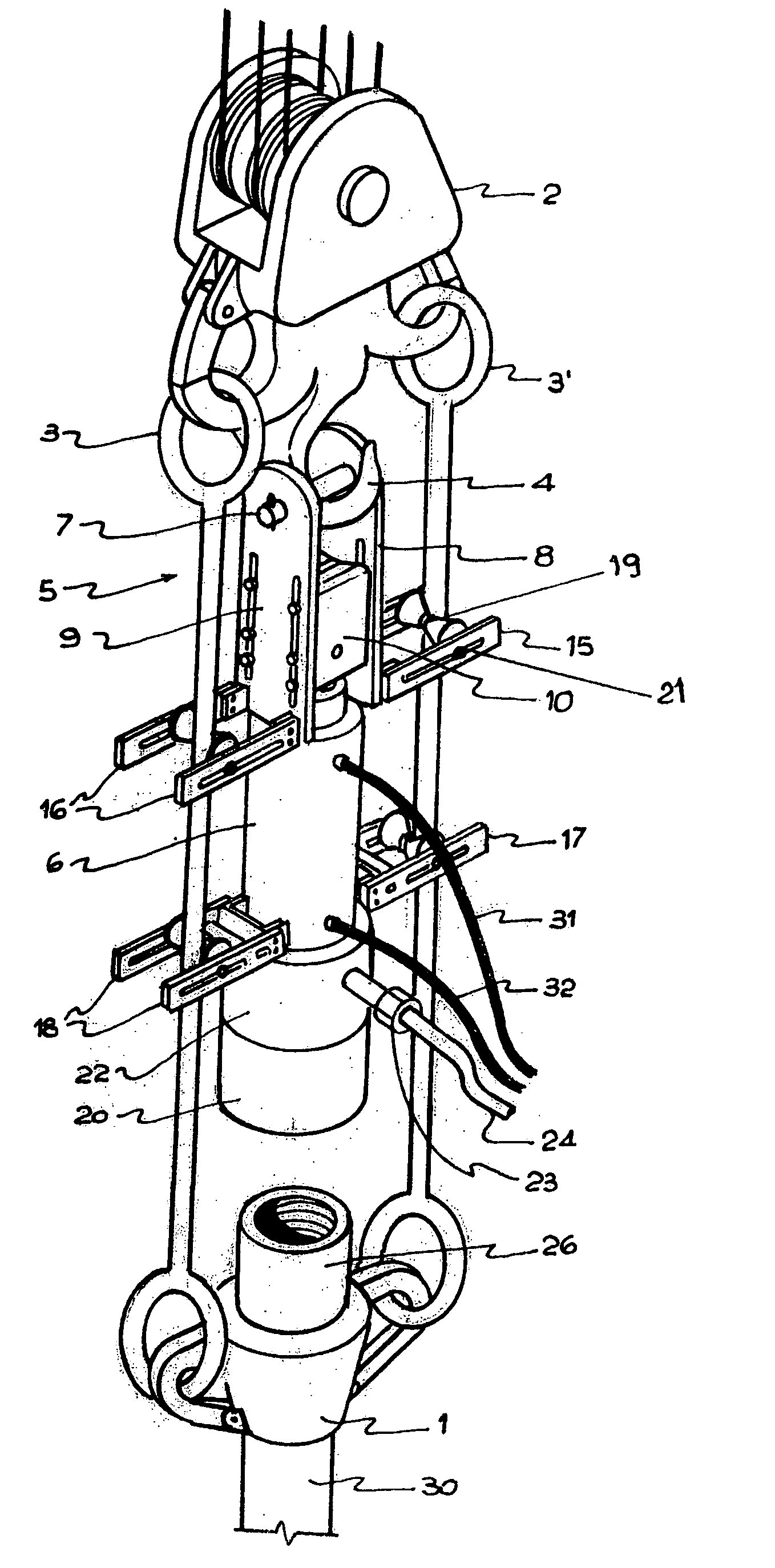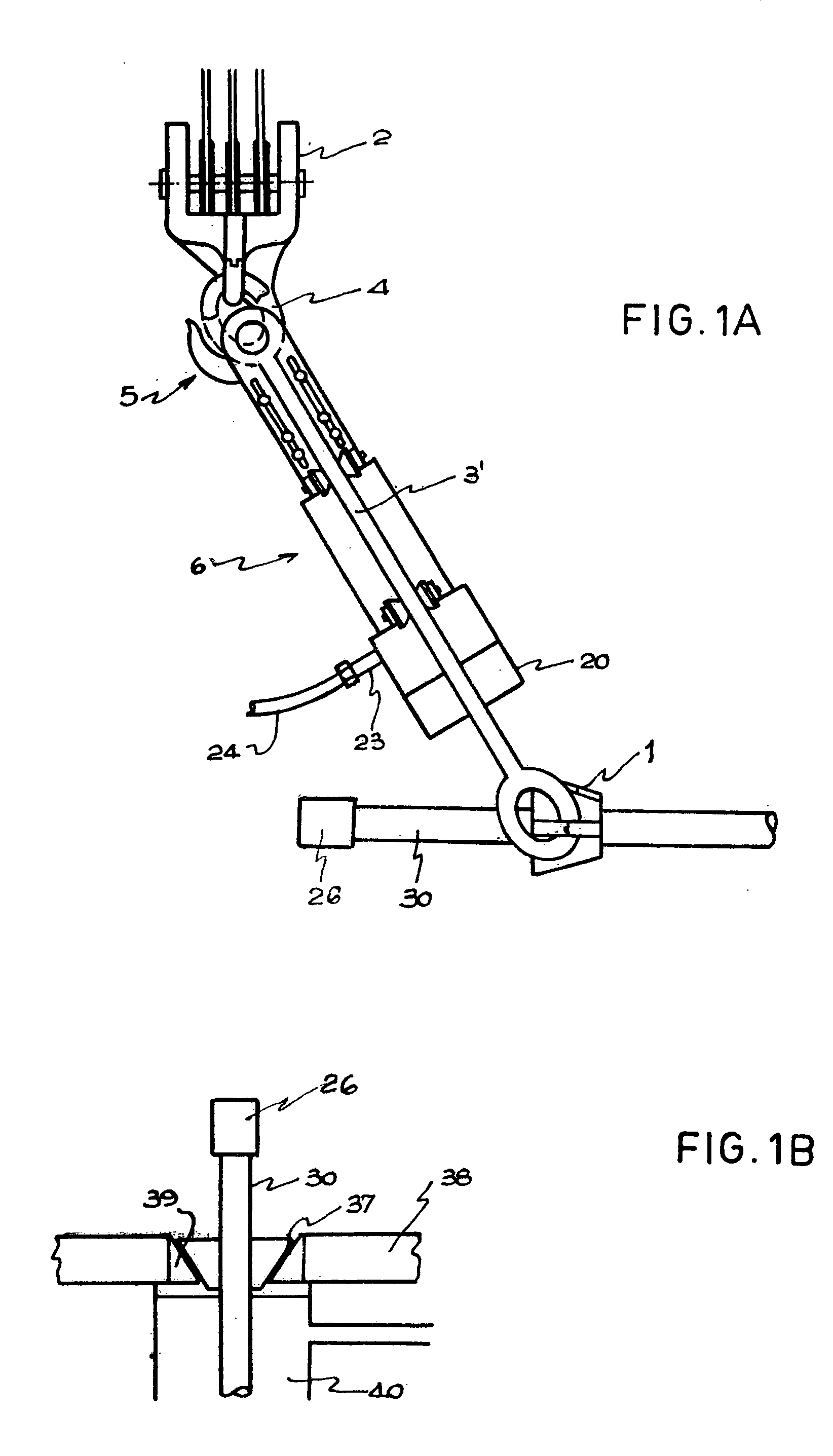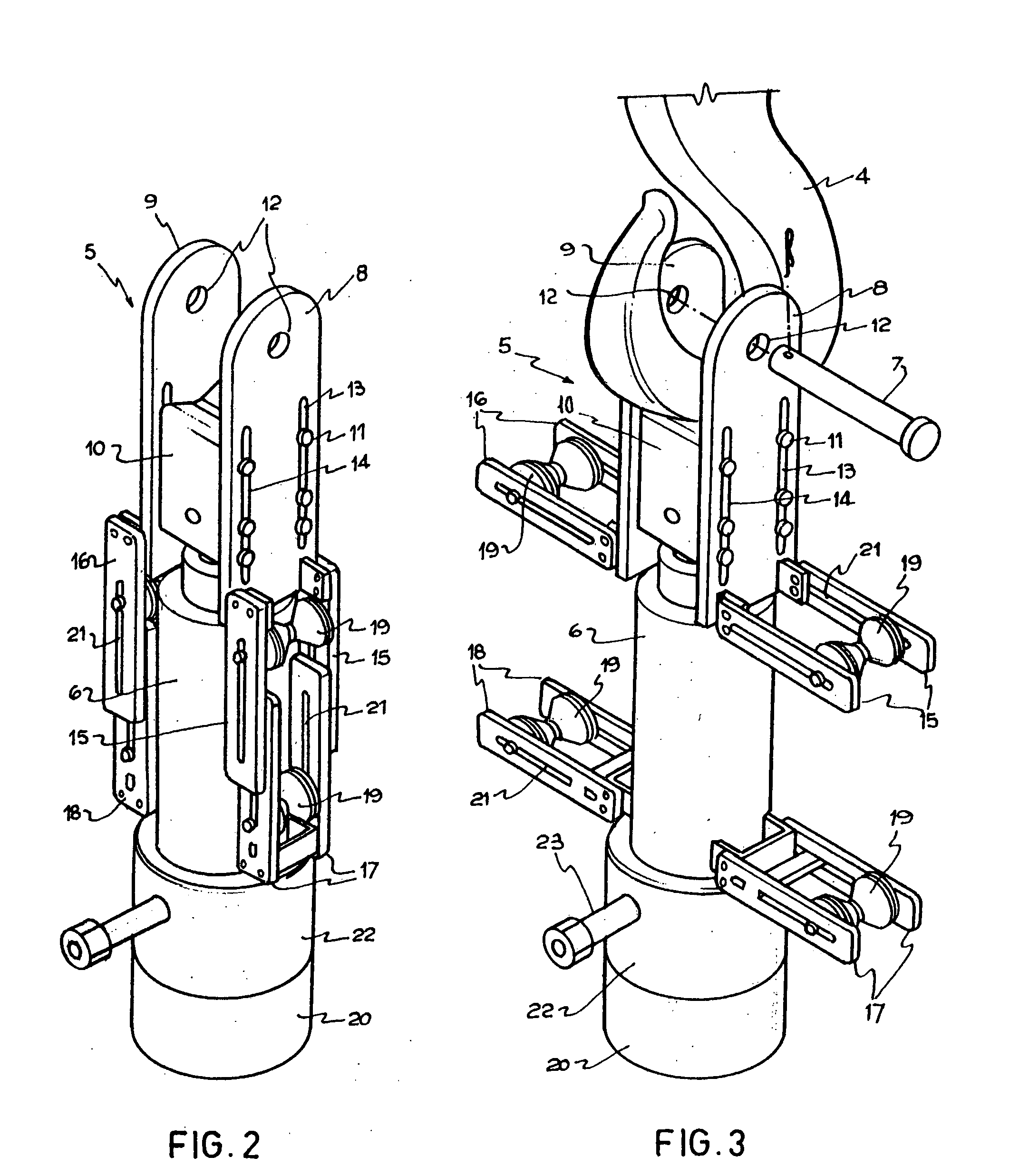Tool for fluid filling and circulation during oilfield well tubing
a technology for oilfield wells and fluids, applied in the direction of fluid removal, drilling accessories, borehole/well accessories, etc., can solve the problems of high time required for its start-up, increased risk/cost tasks, and considerable turning of installation, so as to save a considerable amount of operational time and improve the cleaning, removal and transfer of solids.
- Summary
- Abstract
- Description
- Claims
- Application Information
AI Technical Summary
Benefits of technology
Problems solved by technology
Method used
Image
Examples
Embodiment Construction
[0143] As can be appreciated from FIG. 1, the tool for filling and circulating the fluid during the tubing of oilfield wells of the present patent of invention has been especially designed to be intercalated between the elevating device (1) and the block (2), between the amelas (3 / 3′) (visible in FIG. 4) which link said pipe elevator (1) with said block (2) of the drilling equipment.
[0144] It should be noted that these elements (1 / 2 / 3 / 3′) are only schematically represented so as not to confuse the object of this invention, and that it is not subject to the characteristics or conditions featured by them and that are common to most drilling equipment.
[0145] In this preferred example, the tool of the invention operates between said amelas (3 / 3′), supported from hook (4) of the block, to which it is connected, in this case, through the support array (5).
[0146]FIG. 1 shows that the mounting of the tool of the invention does not affect the operation of the drilling equipment when takin...
PUM
 Login to View More
Login to View More Abstract
Description
Claims
Application Information
 Login to View More
Login to View More - R&D
- Intellectual Property
- Life Sciences
- Materials
- Tech Scout
- Unparalleled Data Quality
- Higher Quality Content
- 60% Fewer Hallucinations
Browse by: Latest US Patents, China's latest patents, Technical Efficacy Thesaurus, Application Domain, Technology Topic, Popular Technical Reports.
© 2025 PatSnap. All rights reserved.Legal|Privacy policy|Modern Slavery Act Transparency Statement|Sitemap|About US| Contact US: help@patsnap.com



